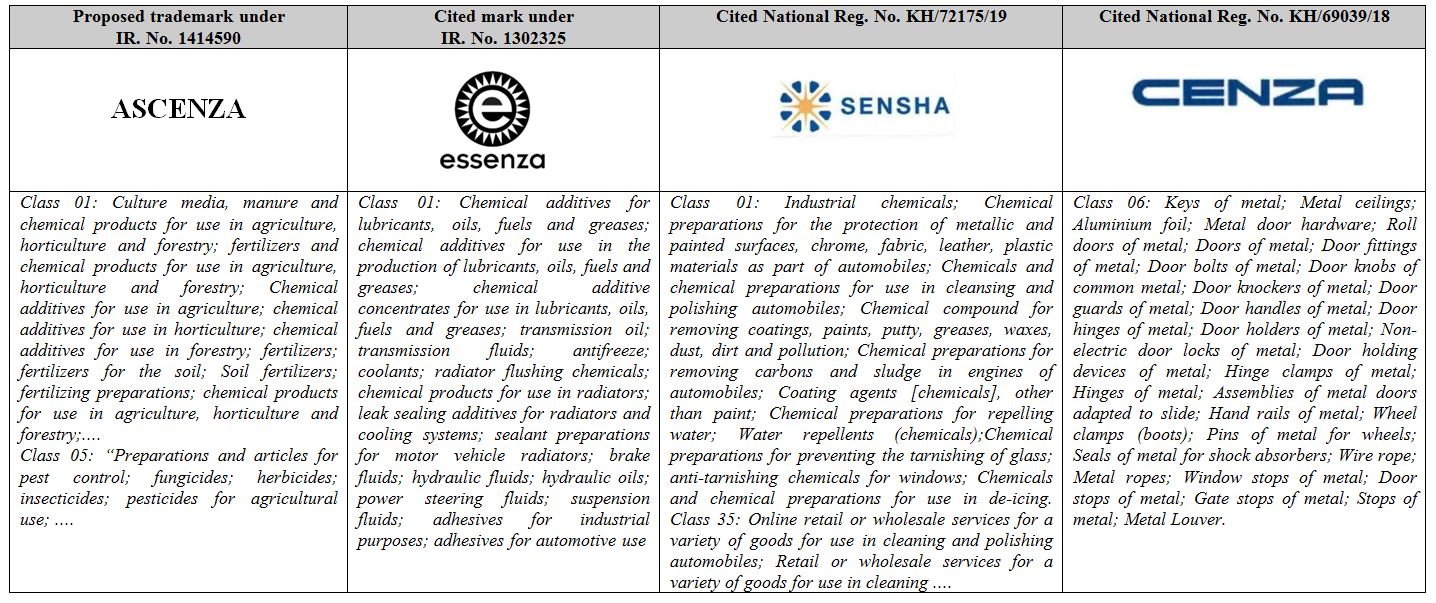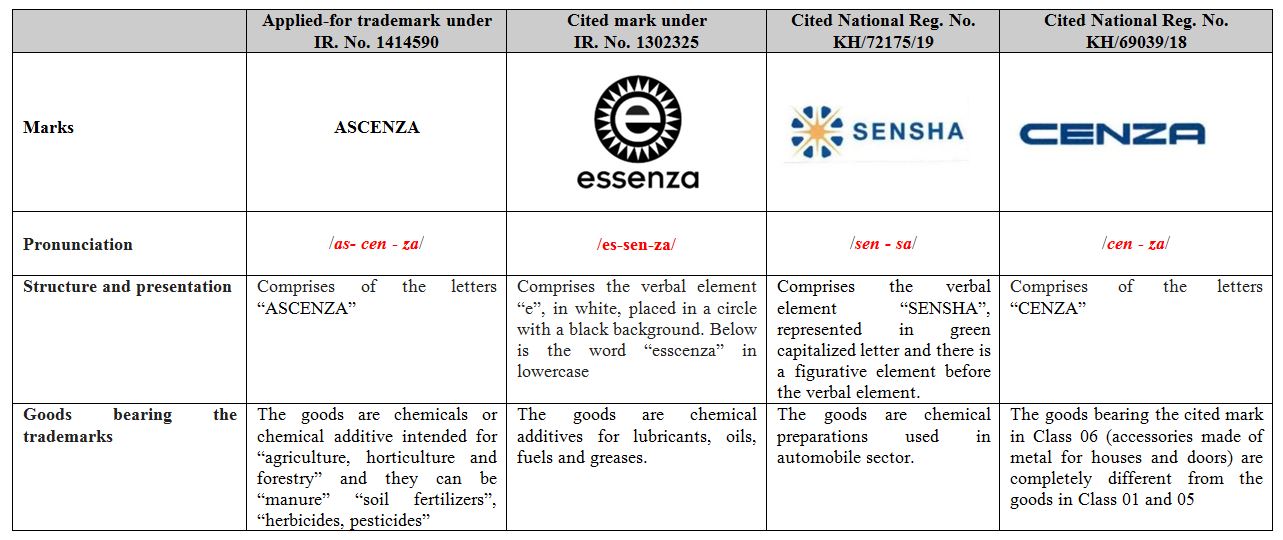Overcoming Notification of Provisional Refusal against an IR designating Cambodia – what should be taken into account?
Overview:
As you know, Cambodia became a member of the Madrid System for the International Registration of Mark on 05 June 5 2015. The system facilitates the filing of applications in multiple countries around the globe. Rather than having to file a trademark application in each country, a trademark owner can file a single application with their national or regional IP office, and then designates protection of their mark in Madrid member countries. This greatly simplifies and reduces the cost of the process, however in case your trademark faced a provisional refusal by the Department of Intellectual Property of Cambodia, what do you have to do to protect your trademark in that case? Our firm, KENFOX IP & LAW OFFICE has succeeded in the event that an IR designing Cambodia faced a provisional, via filing a response to the Provisional Refusal issued by Department of Intellectual Property of Cambodia (“DIP”).
Background:
SELECTIS – PRODUTOS PARA A AGRICULTURA, S.A. (“SELECTIS”), a Portugal-based legal entity, filed an application for international registration seeking protection for a mark under Int’l Registration No. 1414590 designating Cambodia. The Department of Intellectual Property of Cambodia (“Cambodia IP Office”) issued a Notification of Provisional Refusal No. 2019/23930 dated 18 October 2019 against the IR No.1414590. The ground for rejecting International Registration Designating Cambodia (“IRDC”) exists under the provision of Article 4 (g), the Law concerning Marks, Trade Names and Acts of Unfair Competition of Cambodia. In detail, the proposed mark is deemed substantially identical with or deceptively similar to a prior mark, and is for similar or closely related goods and/or services. Details of the proposed mark and cited mark are as follows:
 Actions taken:
Actions taken:
Statutorily, the applicant is entitled to file a response to the Cambodia IP Office’s refusal within 60 days (extendable one time only for another 60-day period) upon receipt of the Notification of the refusal thereof from the International Bureau by submitting a petition to the Cambodia IP Office to request this office to revoke its refusal. Generally, the applicant of an IRDC may overcome a provisional refusal based on a prior mark by taking the following options: (i) arguing on the dissimilarity between the mark at issue and the citation, (ii) seeking for a Letter of Consent from the owner of the citation or (ii) taking 5-year non-use cancellation against the citation in case the citation is found non-used in Cambodia for the past 5 years.
Taking the proposed mark and the cited marks into consideration, as instructed by SELECTIS, we filed a response to the Cambodia IP Office, rendering arguments and analysis on dissimilarities on trademark representation, trademark structure, trademark pronunciation, trademark meaning and also to conduct a comparison of goods or services bearing the applied-for mark to those bearing the cited marks. Detailed analysis on different visual impression given by the four marks in question has been particularly made and stressed in our response. Based on our arguments and analysis on non-similarity between the cited marks and the applied-for mark, we emphasized that likelihood of confusion on the commercial origin of services bearing the said marks cannot be established.
In details:
 Outcome:
Outcome:
Having reviewed our response, the Cambodian DIP found that our arguments are rooted and convincing, as such, annulled Provisional Refusal Notification No. 2019/23930 dated 18 October 2019 and approved protection for the mark “ASCENZA” under International Trademark Registration No. 1414590 in the name of SELECTIS – PRODUTOS PARA A AGRICULTURA, S.A. in Cambodia.
Takeaway:
- The Cambodia IP Office tends to conduct a quite stringent examination and does not take sufficient account of all factors and circumstances relevant in each particular case, resulting in excessive and unconvincing refusal against applied-for trademarks.
- As a matter of principles, to determine the relevance of an earlier trademark right as a ground for refusal, the examiner must necessarily consider both (i) the marks in conflict and (ii) the specifications of goods/ services covered by those marks. In this regard, it is necessary to compare the marks and the corresponding goods/services to ascertain whether they are close enough to cause prejudice to the holder of the earlier right and confusion to the buying public. When comparing the similarity of the marks, the question of confusion must be answered by comparing the marks as wholes. This requires that all the relevant circumstances be taken into consideration in a single global assessment, meaning all factors need to be weighed.
- In case the goods/services bearing the marks in question are identical or similar, arguments and analysis should focus on standing out (distinguishing) the differences between the applied-for mark and the citation to refute the finding of confusion by the examiner. Comparison should include all the elements (e. verbal and figurative elements) in the marks. The likelihood of confusion must therefore be assessed globally, taking into account of all factors relevant to the circumstances of the case. That global assessment of the visual, aural or conceptual similarity of the marks in question, must be based on the overall impression provided by the marks, bearing in mind that the particular distinctive and dominant components contained in this mark may prevail over others, thus making the marks at issue be perceived and memorized in different ways by the consumers.
- When comparing marks at issue to determine likelihood of confusion, the distinctive strength of the elements (the prominent element) contained in the marks must be taken into account. In assessing a purely figurative mark with a composite mark (including words and device), more emphasis should be placed on the word element. Words are naturally more memorable. In such perspective, the word element in a composite mark always plays a pivotal role in memorizing such mark and prevails over the figurative element because consumers will tend to read and retain the word(s) rather than the accompanying visual elements. In this sense, despite similarity in certain aspects found in a purely figurative mark and with a mixed mark, such similarity cannot sustain a finding of likelihood of confusion.
For more case studies, please click here

